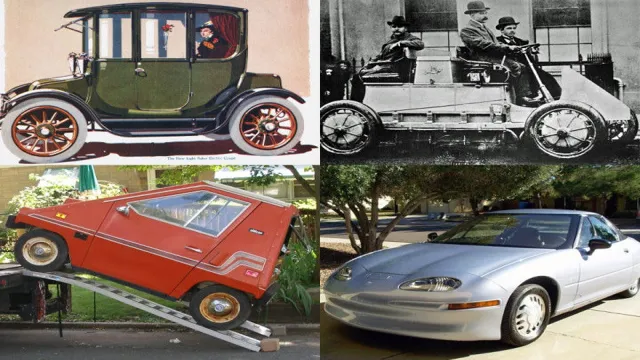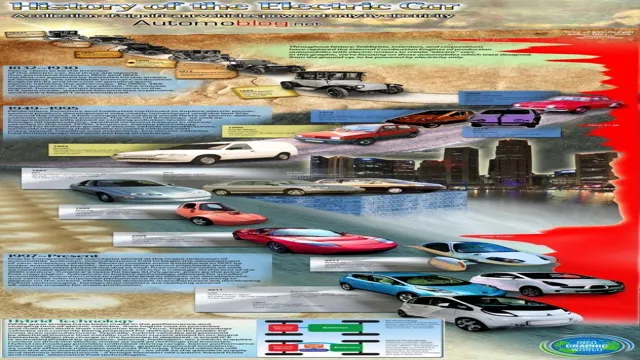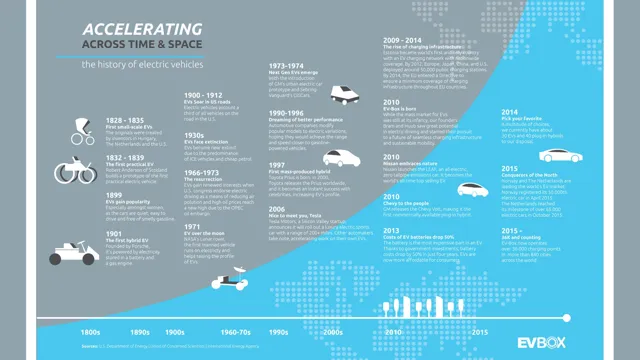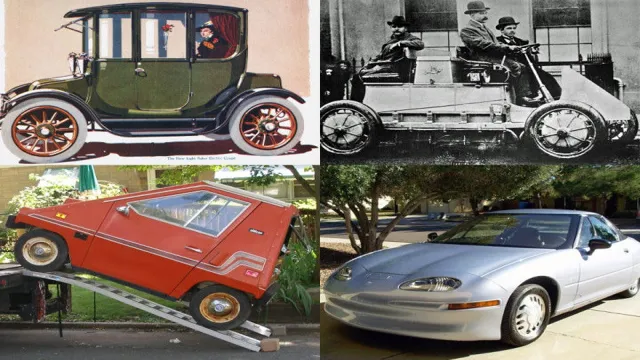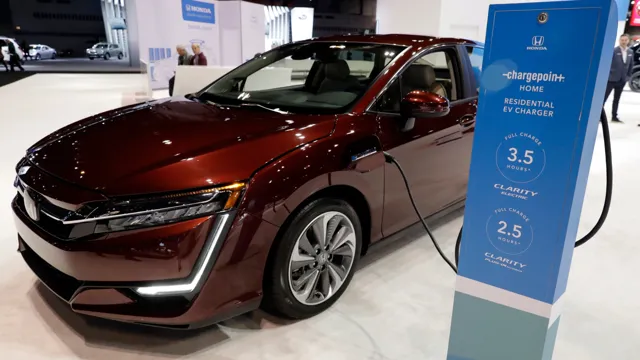Revolution on Wheels: Tracing the Rich History of Electric Cars in the United States
Electric cars are becoming more and more popular today, but they are not a new invention. In fact, electric vehicles have been around since the late 1800s. The first electric automobile was actually built in the United States in 189
However, it was not until the late 20th century that electric cars started to catch on as a viable alternative to traditional gasoline-powered cars. Today, the electric vehicle market has grown significantly, with major automakers investing heavily in producing electric models. In this blog post, we will explore the history of electric cars in the United States, from their early beginnings to their current evolution.
Early Development
The early development of electric cars in the United States dates back to the early 1800s when inventors started toying with the concept of electric vehicles. However, it was not until the late 1800s that electric cars began gaining momentum in America. By the turn of the century, electric cars had become a common sight on city streets.
In 1900, electric vehicles made up one-third of all cars on the road, with New York City having the largest fleet of electric taxis in the world. The appeal of electric cars was their quiet operation, lack of exhaust fumes, and ease of use. However, as the internal combustion engine became more popular, electric cars lost traction.
By the 1920s, advancements in gasoline-powered engines made them cheaper and more efficient, leaving electric vehicles far behind. It would not be until the 1970s oil crisis that the concept of electric cars began to resurface, leading to the development of the first electric car produced in the United States, the General Motors EV
Invention of the Electric Vehicle
Electric Vehicle (EV) The invention of the electric vehicle dates back to the early 19th century when various inventors began experimenting with electricity and transportation. In the 1830s, a Scottish inventor, Robert Anderson, created the first crude electric carriage powered by non-rechargeable batteries. Following Anderson’s experiment, an American inventor named Thomas Davenport invented the first practical electric motor in 183
Over the next few decades, inventors continued to improve on electric vehicles, but it wasn’t until the late 1800s when advancements in battery technology and the development of electric starters for internal combustion engines that electric vehicles became a viable option for consumers. By the early 1900s, EVs were being produced and sold commercially, and between 1900 and 1920, electric vehicles were even outselling gasoline-powered cars. However, the mass production of gasoline vehicles and the discovery of large petroleum deposits in the United States led to the decline of electric vehicles.
It wasn’t until the 1990s when the need for more environmentally friendly transportation options and the advancements in battery technology allowed for a resurgence of the electric vehicle.

Early Popularity
During its early stages of development, the concept of popularity wasn’t necessarily a defining factor for social media platforms. Although sites like Friendster and MySpace were gaining traction, it wasn’t until the launch of Facebook in 2004 that the idea of social media became synonymous with mass popularity. At the time, Facebook was only available to college students, yet its exclusivity only added to its allure.
Soon, word of mouth turned into a viral phenomenon as students across the country joined the platform in droves. This burst of popularity ultimately led to the platform’s expansion beyond college campuses and provided the foundation for its success today as a global social media giant.
Decline and Resurgence
The history of electric cars in the United States has gone through a series of ups and downs. In the early 1900s, electric cars were more popular than gasoline-powered cars, but their popularity declined by the 1920s due to the availability of cheap oil. However, in recent years, electric cars have made a resurgence due to increasing concerns over climate change and the need for greener transportation options.
The development of more efficient batteries and the decrease in production costs have also contributed to the rise in popularity of electric cars. Today, electric cars are becoming more widely accepted and are being seen as a practical and sustainable solution to reducing carbon emissions and promoting a cleaner environment. With the continued advancements in technology, it’s exciting to see what the future holds for electric cars.
Rise of Gasoline Cars
Rise of Gasoline Cars: Decline and Resurgence Gasoline cars revolutionized the way we travel and live, but their dominance didn’t go unchallenged. The introduction of electric and hybrid vehicles sparked concern about the future of gasoline cars. Critics believed that electric cars would replace gasoline cars and soon dominate the roads; however, the decline of gasoline cars did not last forever, and they are making a resurgence.
Despite the increased popularity of electric cars, gasoline cars remain the dominant mode of transportation. The reasons for this resurgence include affordability, convenience, and safety. Gasoline cars are more affordable, convenient, and safer than their electric counterparts.
They offer a longer range, quick refueling, and better performance, making them ideal for long-distance travel. Additionally, gasoline cars are more reliable, require low maintenance costs, and are easy to repair. As a result, many people still prefer gasoline cars over electric cars.
With advances in technology, including efficient fuel combustion and reduced carbon emissions, gasoline cars are becoming more efficient and cleaner, making them more environmentally-friendly. The resurgence of gasoline cars is a sign that they are here to stay and will continue to be a popular mode of transportation for years to come.
Environmental Concerns and Government Incentives
Environmental concerns have become an increasingly important issue for governments around the world, leading to a resurgence in the use of incentives to encourage sustainable practices. In recent decades, there has been a decline in government efforts to address environmental issues, as the focus shifted towards economic growth. However, the negative consequences of climate change, pollution, and loss of biodiversity have made it clear that action is necessary.
Governments are now using a variety of incentives to encourage businesses and individuals to adopt sustainable practices. These may include tax breaks, subsidies, and grants for renewable energy, green building, and recycling programs. By offering these incentives, governments hope to encourage a shift towards more sustainable practices that will both benefit the environment and support economic growth.
Although there is still a long way to go, the resurgence in government incentives is a positive sign that we are moving in the right direction.
Modern Electric Cars on the Market
Modern Electric Cars on the Market Decline and Resurgence Electric cars have a storied past, one that’s marked by several ups and downs. Electric vehicles started as an extremely efficient mode of transportation but suffered a drastic decline when gasoline-powered vehicles entered the market. However, the last decade has seen a resurgence of electric cars, thanks in no small part to advancements in technology.
Today we have modern electric cars that can go for hundreds of miles on a single charge and have all the bells and whistles of their fossil fuel counterparts. These days, it’s not just Tesla that’s leading the way – several automakers have entered the EV market, and there are more options than ever before. The future looks bright for electric vehicles, and it’s all thanks to the innovative minds that are pushing the industry forward.
Future of Electric Cars in the US
The history of electric cars in the United States dates back to the early 1900s when they first became a viable option for transportation. However, their popularity was short-lived due to advancements in fossil-fueled engines and limited battery technology. Fast forward to the present, and electric cars have become increasingly popular in the United States due to environmental concerns and advancements in technology.
In 2020, electric cars made up 6% of all new car sales, a significant increase from a decade ago. The future of electric cars in the United States looks bright, as more manufacturers invest in developing affordable electric cars with longer ranges.
With increased government incentives and the push for a more sustainable future, it’s safe to say that electric cars will only continue to grow in popularity in the United States.
Push for Renewable Energy
As the push for renewable energy sources continues in the US, the future of electric cars looks bright. Many Americans are now seeking alternative modes of transportation that are both environmentally friendly and cost-effective. Electric cars are one such solution that ticks all the right boxes.
With improvements in battery technology, electric cars’ range has significantly increased, making them much more practical for daily use. Additionally, with federal tax incentives, purchasing an electric car has become more accessible for many consumers. As concerns about climate change grow, electric cars may soon become the norm, and we’ll look back on our reliance on fossil fuels in disbelief.
With their low emissions and quiet engines, electric cars represent a promising future for the transportation industry.
Advancements in Battery Technology
Electric cars are quickly gaining popularity as advancements in battery technology improve. The future of electric cars in the US looks promising with the development of new, high-capacity batteries that can achieve longer driving ranges. With improved battery technology, electric cars are becoming more practical and efficient for daily use, making them an increasingly attractive option for consumers looking for an environmentally friendly alternative to traditional gas-powered cars.
In addition to providing a cleaner mode of transportation, electric cars are also becoming more affordable as technology continues to improve. The transition to electric cars may take time, but with continued progress in battery technology, the future is looking bright for the electric car industry.
Conclusion
In conclusion, the history of electric cars in the United States has been a rollercoaster ride full of ups and downs. From their early beginnings in the 19th century to their resurgence in the 21st century, electric cars have faced numerous challenges and obstacles. However, with advancements in technology, changes in consumer attitudes, and a growing concern for the environment, it seems that electric cars are finally here to stay.
So let’s charge forward into the future with these clean and green vehicles, and leave behind the pollution and noise of the gas-guzzling past!”
FAQs
When were electric cars first introduced in the United States?
Electric cars were first introduced in the United States in the late 19th century.
What led to the decline of electric cars in the United States in the early 20th century?
The introduction of the internal combustion engine and the availability of cheap gasoline led to the decline of electric cars in the United States in the early 20th century.
When did electric cars start making a comeback in the United States?
Electric cars started making a comeback in the United States in the late 1990s and early 2000s, with the introduction of models like the GM EV1 and the Toyota Prius.
What is the current state of electric car adoption in the United States?
Electric car adoption is steadily increasing in the United States, with more models and charging stations becoming available and government incentives helping to promote their use. However, electric cars still make up a relatively small percentage of overall vehicle sales in the country.

